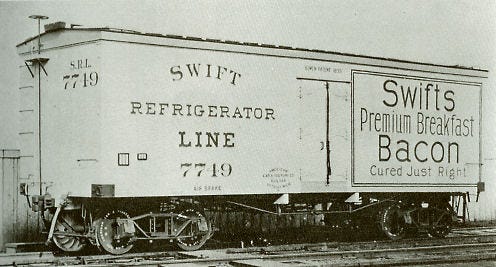Originality is not the only Way; It sometimes Pays to Copy
Why leveraging ideas that were invented by others can be a superpower.

Sometimes you just have to copy what worked for someone else in their venture and apply it to your own venture. I know that the world tells us that we need to be original; that we need to come up with new ideas to apply to our lives, careers and businesses; that we are special. However, I believe that sometimes, we can achieve tremendous success not by trying to come up with new ideas but by leveraging ideas that have already been tested by someone else.
Over the next couple of paragraphs, I will expand further on the paragraph above
Exhibit
John D Rockefeller sets the initial play in 1874 in the American oil transport industry
In the early decades of the American Oil Industry, the fear of oil fields drying up loomed large upon the major players- railroad companies, refiners, oil producers- within the industry. This meant that some major players within the oil industry business were scared of making further investments; Investments which were needed for the efficient and effective transportation of oil from drilling sites to refineries.
Barrels used to transport oil from the place of oil discovery to refineries were known to be inefficient. This was because of two main reasons: oil barrels cost more to manufacture than the contents inside them and the forests of America could not infinitely supply the materials needed to make oil barrels.
The railroads companies such as Lake Shore, Erie, New York Central and Pennsylvania had no interest investing in custom made facilities for transporting oil to address the inefficiency of oil barrels. The railroads feared that by investing in specialised equipments for oil transportation, they would lose out on general freight which they believed to be a more stable line of business.
It was during this time in 1874 that John D Rockefeller, founder of Standard Oil, made a contrarian and bold decision by investing in the specialised equipments needed for oil transportation. He raised tens of thousands of dollars to invest in oil tanks. Oil tanks increased the efficiency in which oil was transported. By investing in oil tanks, Rockefeller ensured that his firm controlled the modern tank cars industry which enabled him extract favours from railroads that other refiners - such as the oil creek refiners- could not get. This played a part in the incredible domination Standard oil had on the oil refining business in the late 19th century.
Smith and Company leverages John D Rockefeller’s earlier play to dominate the growing beef packaging and transport industry
A couple of years later, Smith & Company, an American meat packaging firm, copied Rockefeller’s earlier play- investing in oil tanks. During the early stages of the American Dressed Beef Industry, Smith & Company and other meat packaging firms such as Armour & Company, were struggling to place their western dressed beef on eastern markets.
One of the obstacles that lead to their struggle was wastage that occurred during transportation of livestock from Chicago to New England where the livestock slaughtered and transformed to dressed meat for consumers.
The traditional way was to move livestock from Chicago to New England through the railroads; This was inefficient as most of the livestock did not make it alive to their final destination
It made economic sense if the livestock was slaughtered in Chicago and transformed to dressed meat before being shipped to New England. This was a new way of thinking that people such as Gustavus Smith, founder of Smith & Company, sought to implement. To overcome this wastage, the enterprising Smith hired Andrew Chase -an engineer- to build a refrigerated car that could be used to transport dressed beef from western America to eastern America.

On completion of this prototype, Smith went to the major railroads to seek investments and partnership for this new innovation. He was met with a resounding no from the major railroads. The railroads refused to invest in what they called expensive refrigerator cars which they felt were to customised for a market - dressed beef - they thought was unprofitable and a threat to their existing livestock carrier business.
Smith’s experience was similar to to what Rockefeller had experienced in 1874 with the railroads. However, Smith was already aware of Rockefeller’s play and followed Rockefeller’s tactic by investing in this new innovation. This required Smith & Company to finance the innovation; A huge business risk at that time.
In conclusion, leveraging ideas can indeed be powerful. It’s not a given that a leveraged idea will work out though. Sometimes, conditions that allowed an idea to work in the past might be slightly different in the present. It must also be noted that I am not advocating for the total dismissal of originality. People such as Isaac Newton and Nikola Tesla invented new fields/industries. My thesis is that we can do both -invent/go from zero to one and leverage an idea/going from one to ten.
My homework for you are:
What inventions/ideas in your field or different field do you know that have been applied successfully in the past that can you can leverage today?
Write down five other scenarios that mirror what Gustavus Smith did with Rockefeller’s initial play.
You can reach out to me at leveragethoughts@gmail.com
If you have enjoyed reading this post from leverage thoughts, smash the subscribe button below to receive notifications in your email when new posts are published.
Don’t enjoy the contents alone. Share it with your friends and family to enable them participate in the leverage thoughts family.
Don’t enjoy the contents alone. Share it with your friends and family to enable them participate in the leverage thoughts family.




Another masterpiece!